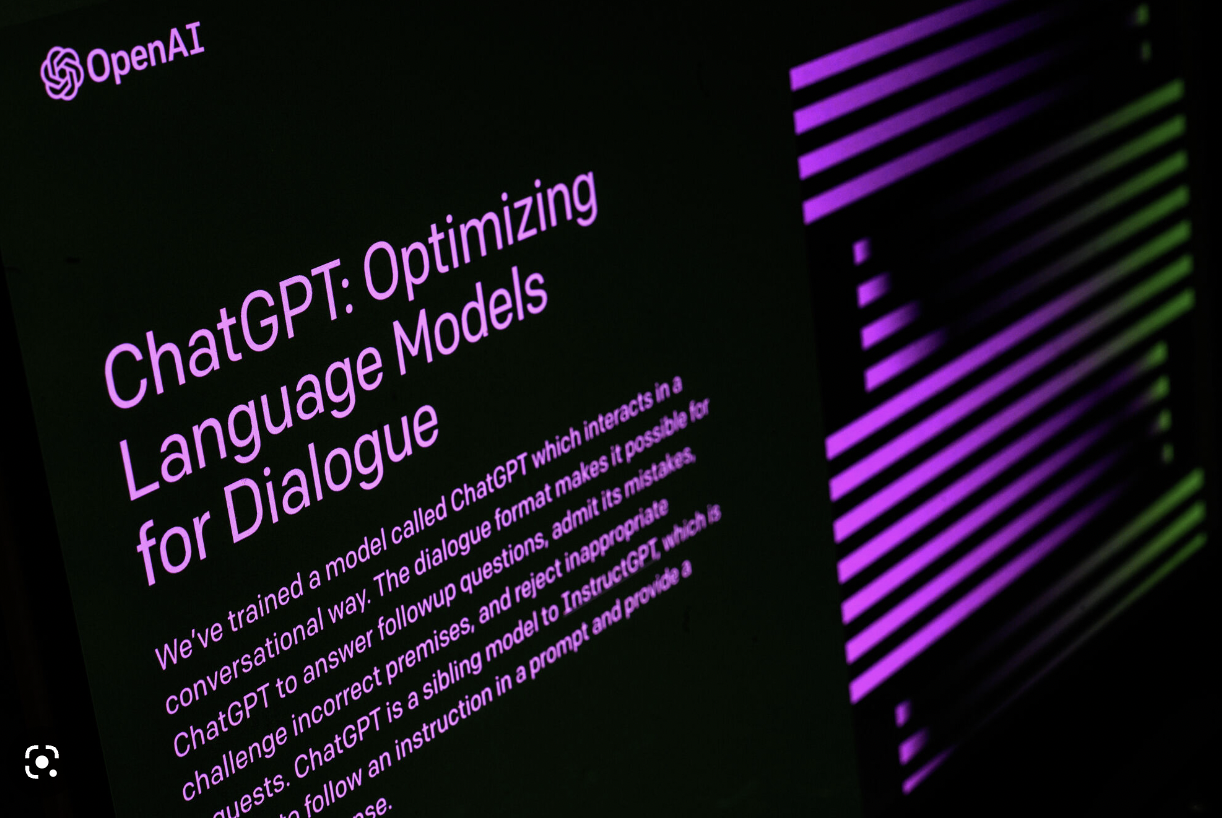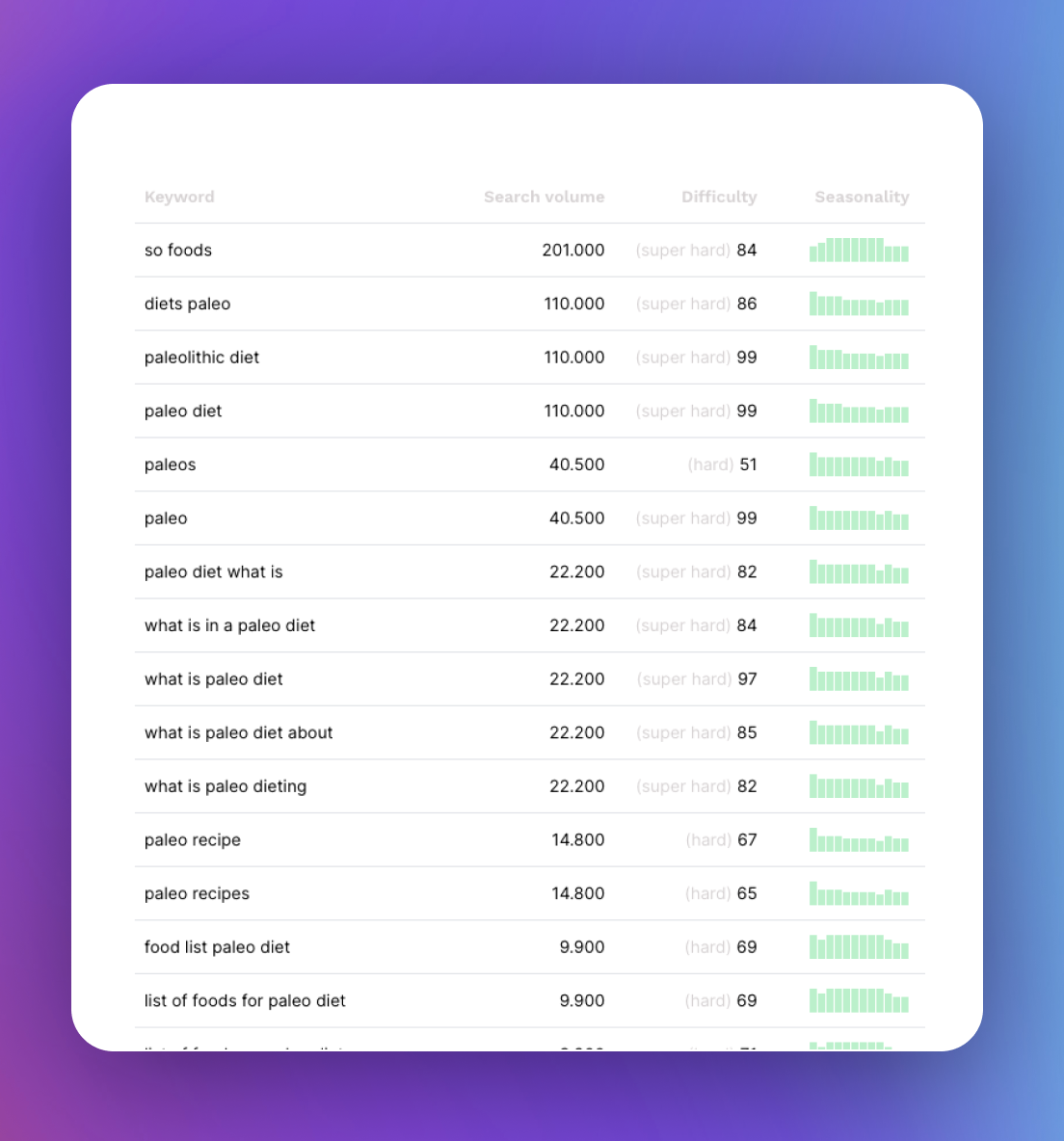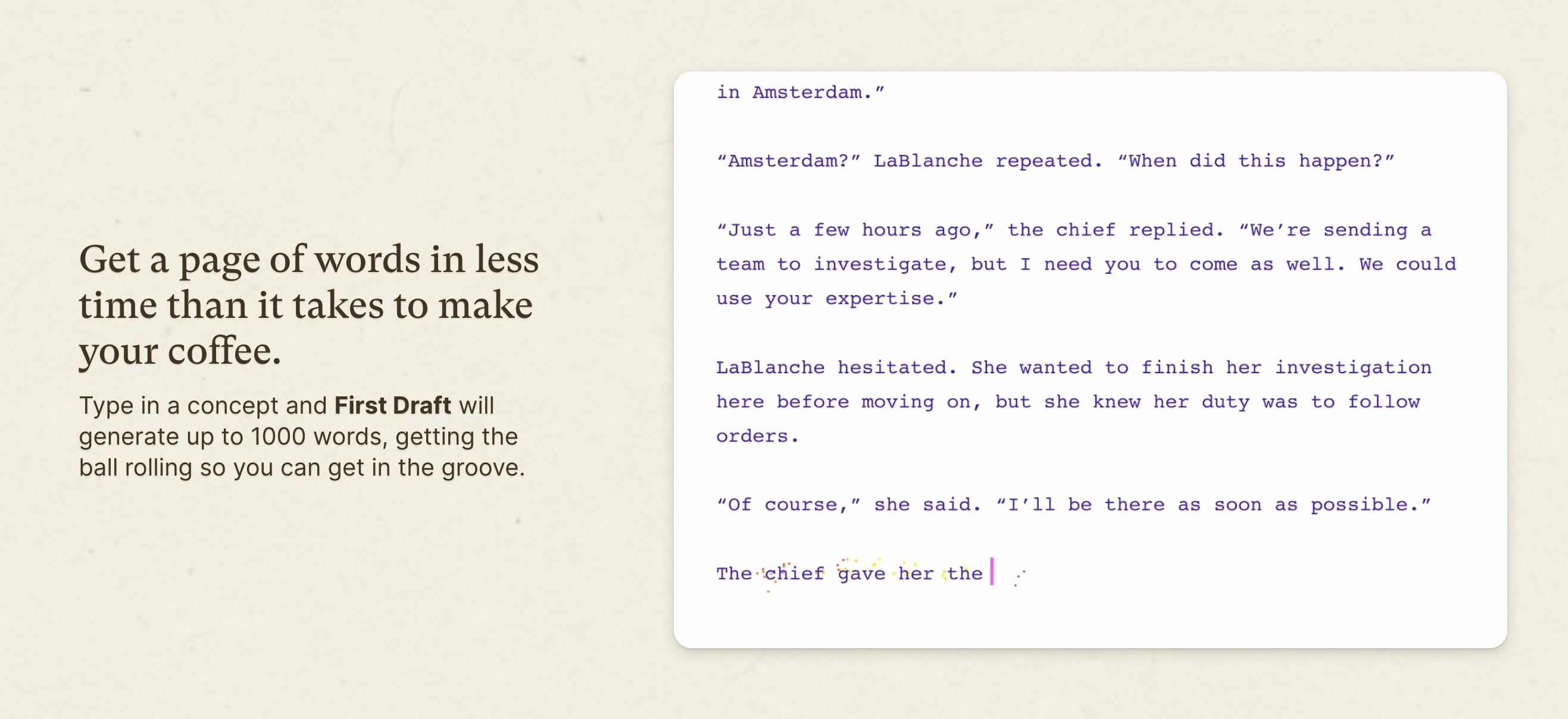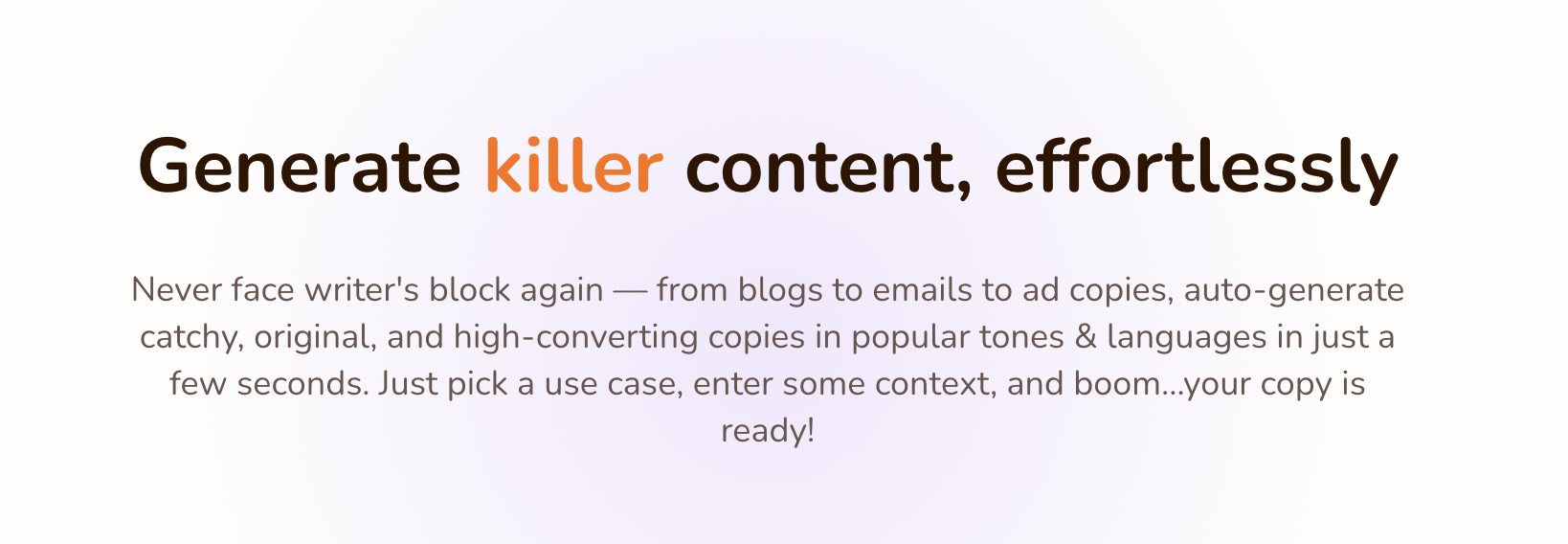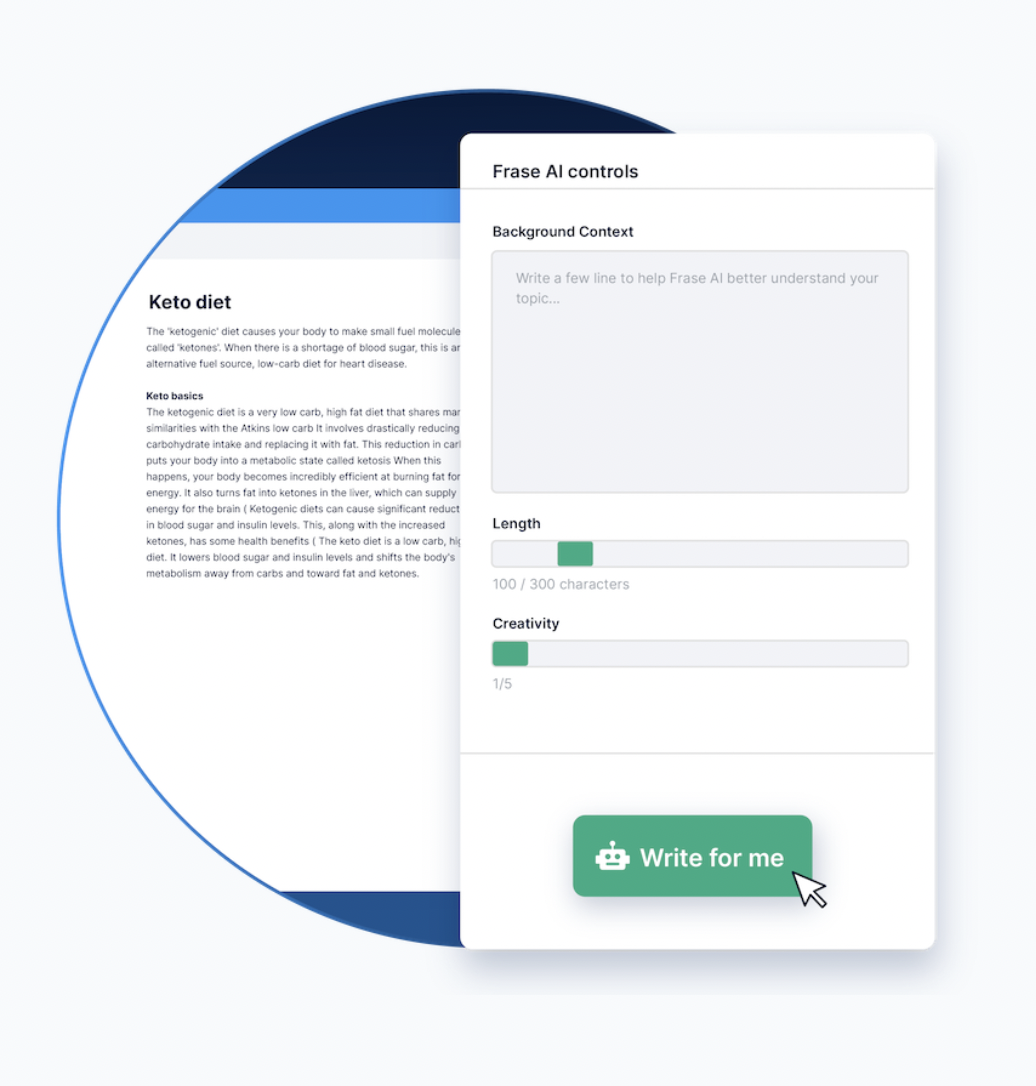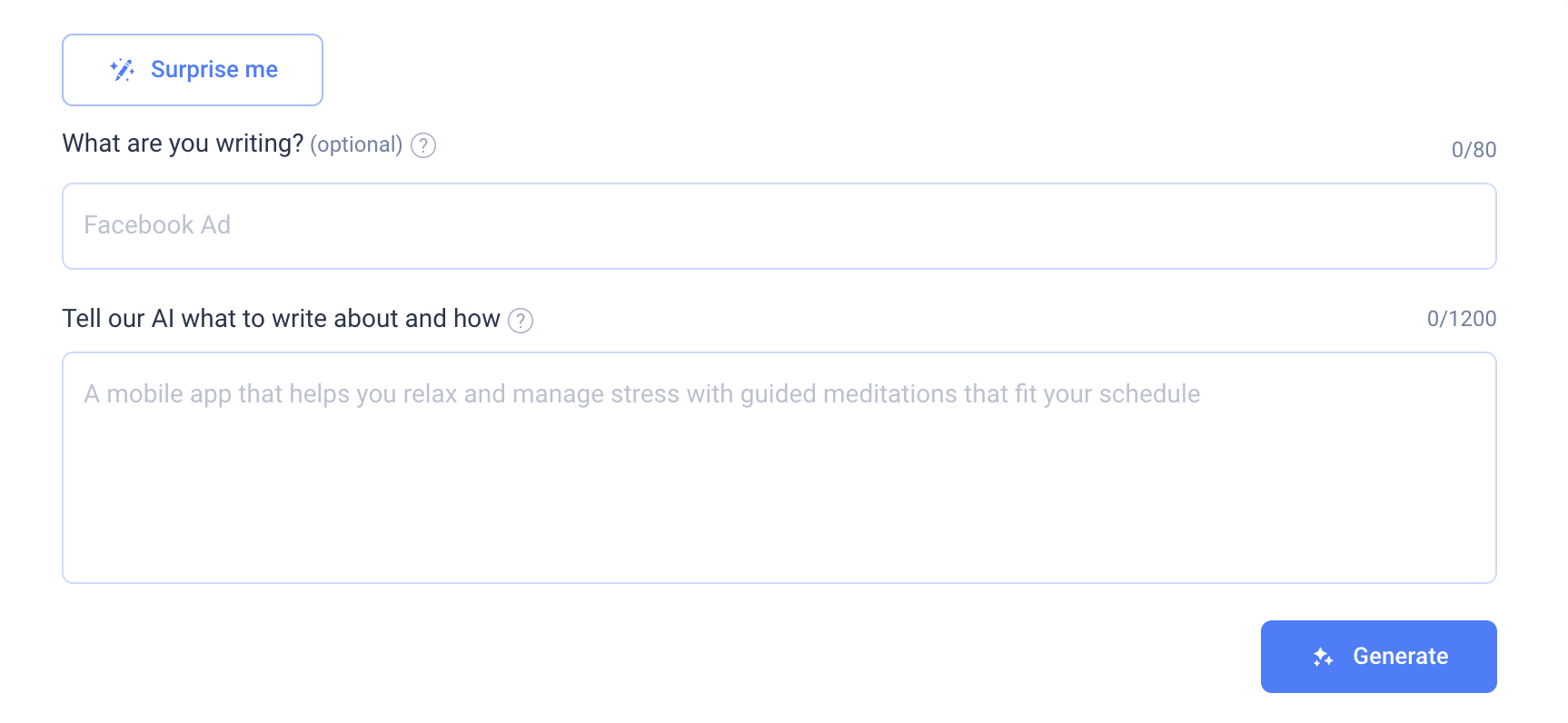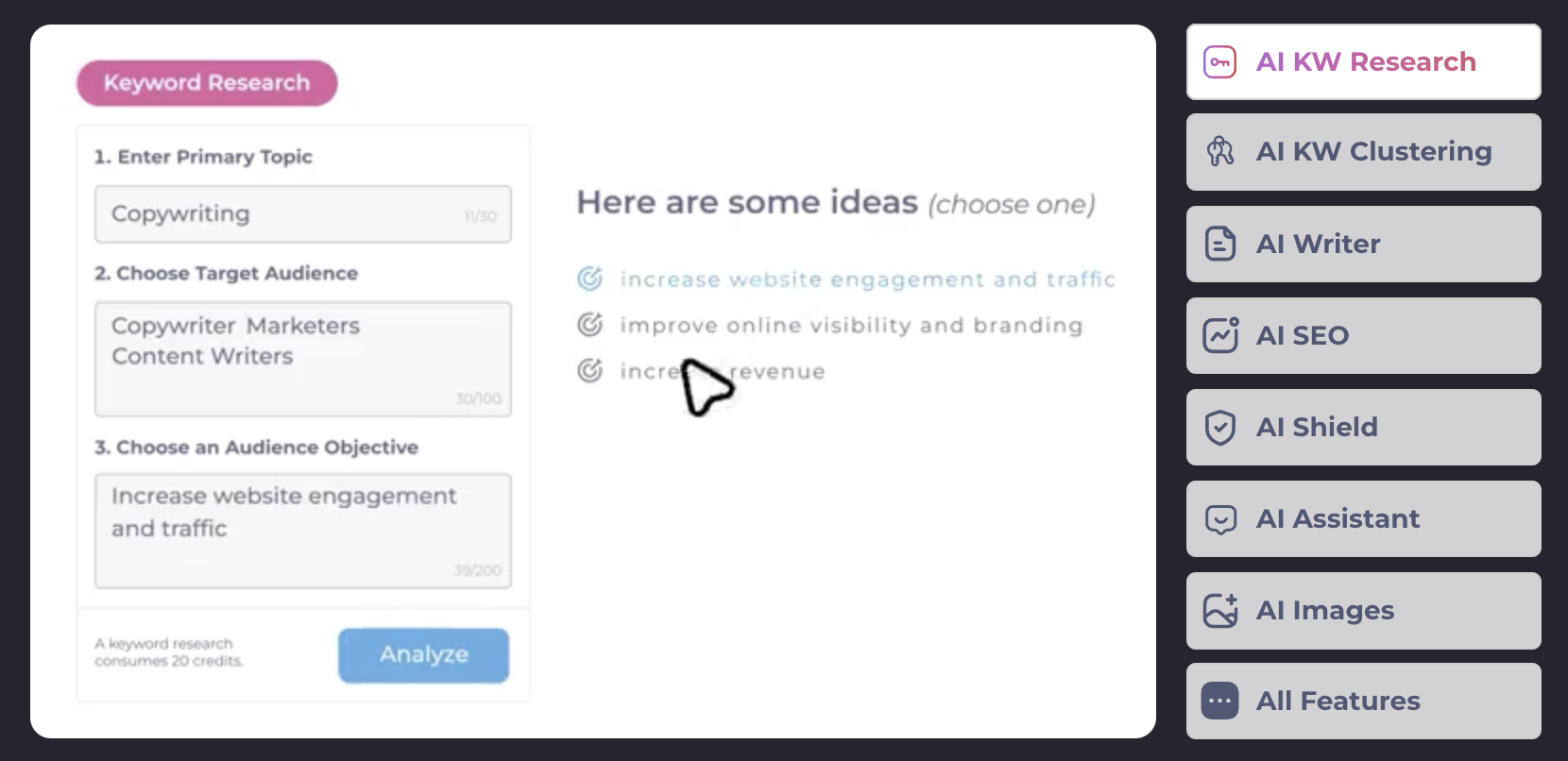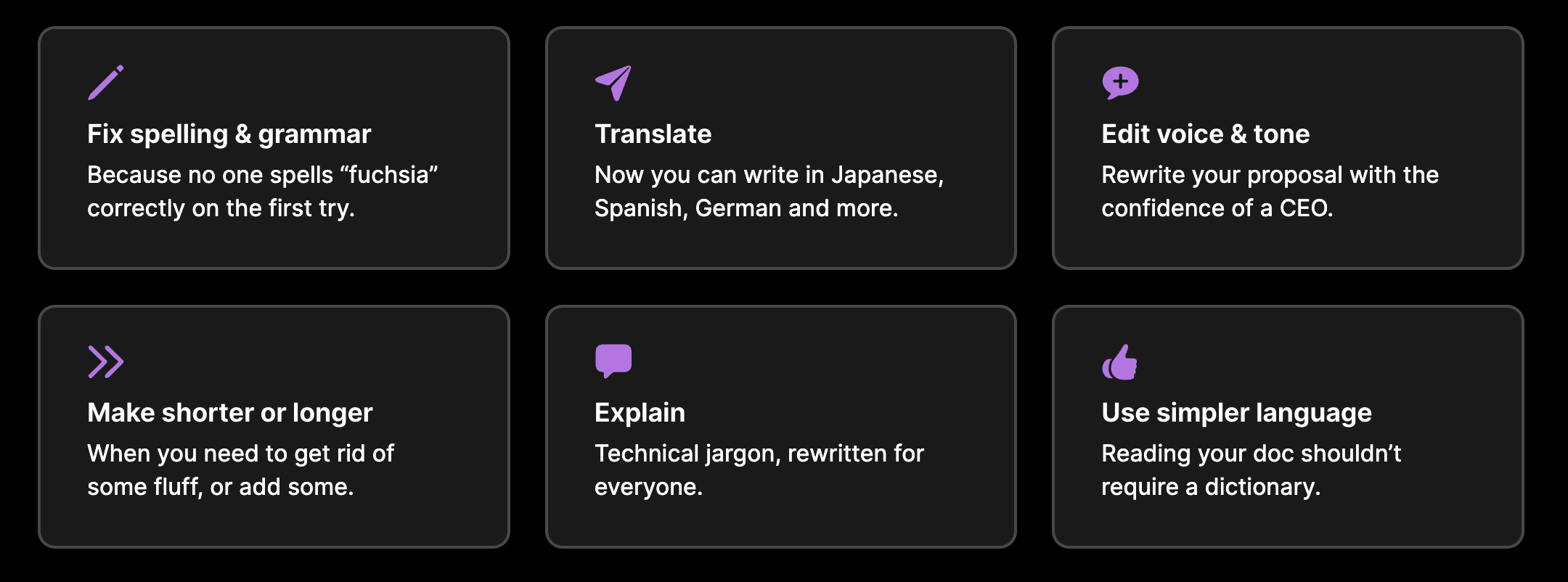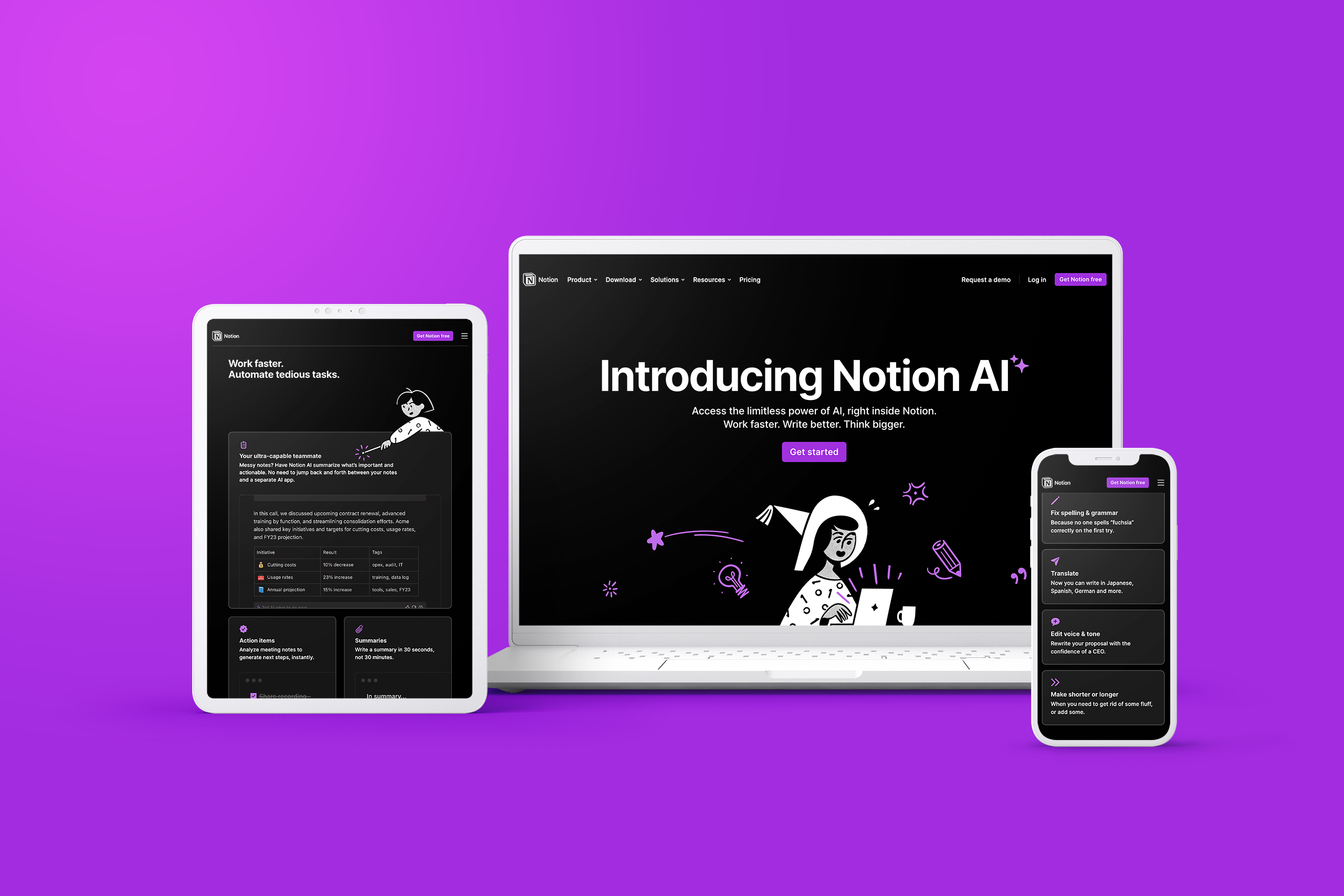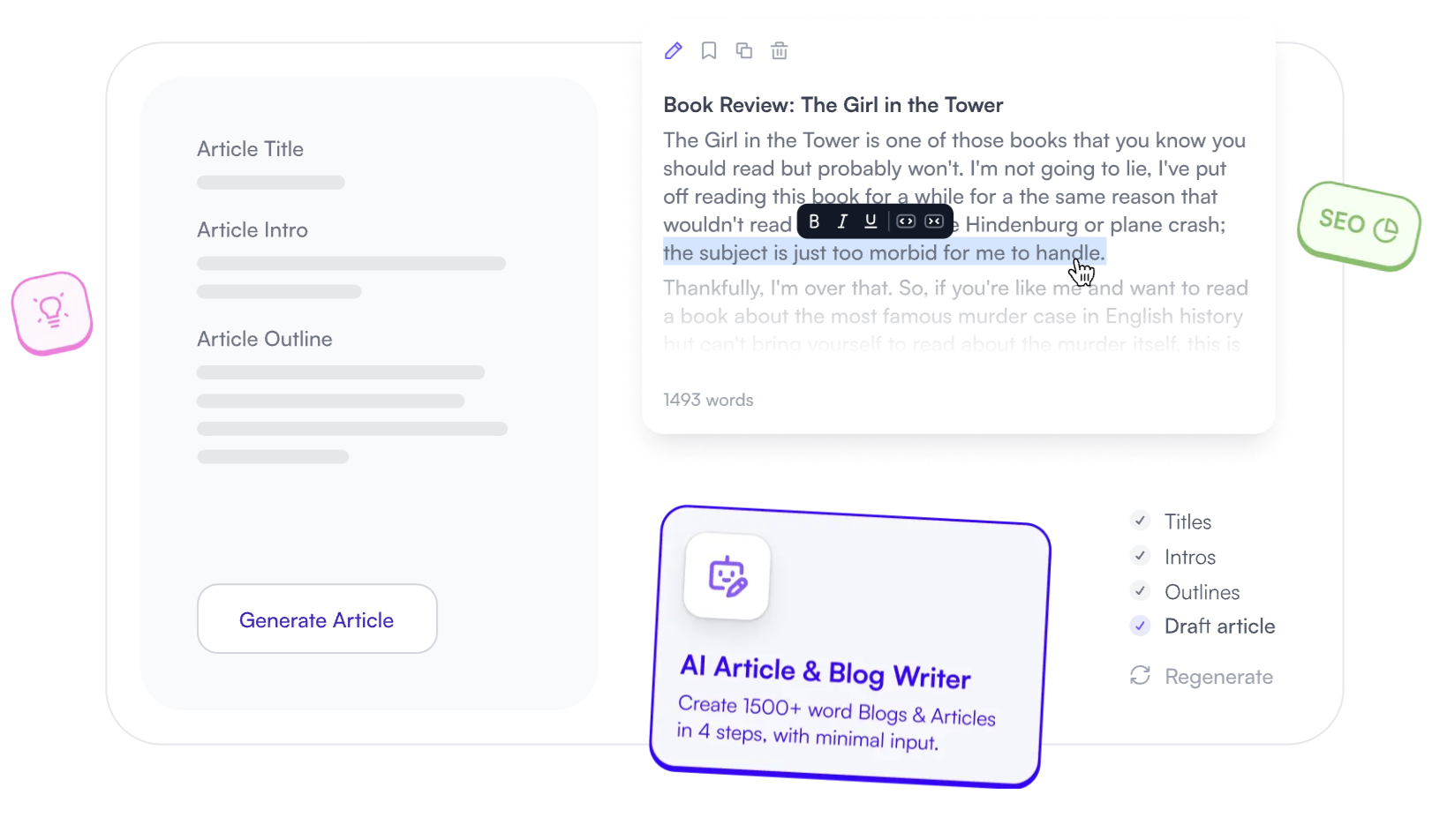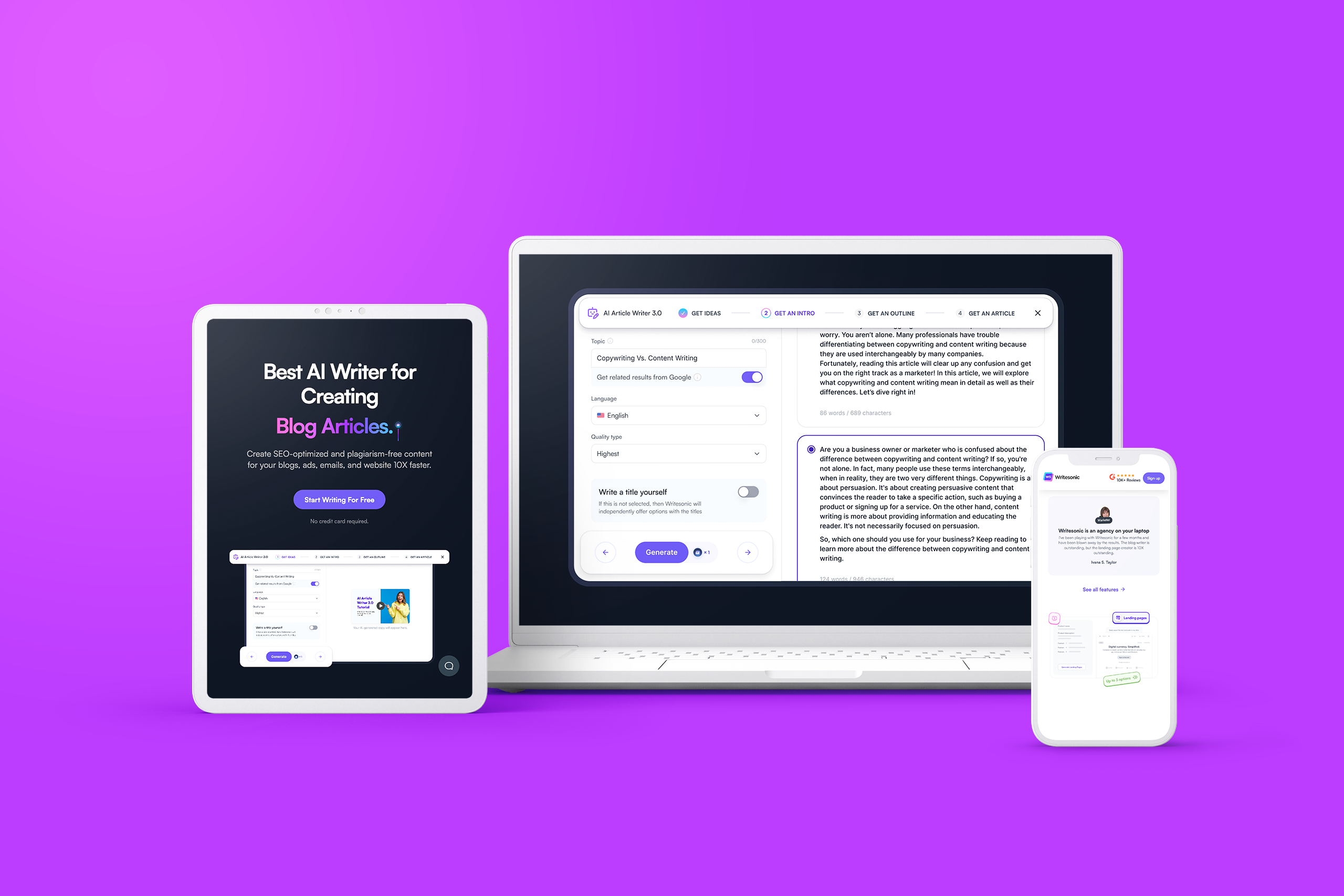An overview of 14 generative AI writing tools

No, this wasn’t written by an AI, but you’d be forgiven for wondering. When OpenAI released ChatGPT to much fanfare in November 2022, it changed the tech landscape forever, and brought generative AI to the forefront of our collective consciousness.
The rapid adoption of ChatGPT led to (or at least unearthed) a sea of generative AI tools designed to help us with everything from manual research to SEO optimisation to bonafide knowledge work.
But if you’ve attempted to look into any one of these tools, you may’ve felt overwhelmed and given up entirely (understandable; I’ll confess to a certain level of overwhelm in my research for this piece). So to make things easier, we thought we’d run through 14 of the major players in the AI writing tools and content creation space.
Here’s a quick outline of what exactly these tools are, their major use cases, and a few general advantages and limitations — as well as an overview of some tech you might want to consider, from Canva’s Magic Write tool to ChatGPT itself.
What do the BBC, Tripadvisor, and Penguin have in common?
They craft stunning, interactive web content with Shorthand. And so can you! Create your first story for free — no code or web design skills required.
Sign up now.
What is an AI writing tool?

AI writing and content creation tools automatically produce content based on prompts. They do this using a combination of AI technology (such as natural language processing) and proprietary algorithms.
They’re trained on neural networks (like OpenAI’s GPT-3, DeepMind’s Gopher, or Bloom), systems designed to mimic the human brain and perform complex tasks such as pattern recognition, problem-solving, or storytelling.
Basically, these tools take these massive language models and pair them with custom algorithms, creating novel technology specifically designed for writing and content.
So a tool trained on GPT-3, for instance, will use the network’s 175 billion parameters of data as its foundation, and then its proprietary algorithms interact with those parameters to produce a desired result — in this case, natural-language writing.
More and more businesses are turning to AI writing software and content creation tools for help with short- and long-form content writing. Popular use cases include social media copy, landing page copywriting, sales and marketing emails, and SEO’d blog posts. Content teams are also experimenting with many other types of content.
Although there’s huge potential in this field, there are also significant drawbacks you should be aware of before deciding to implement an AI writer in your work.
Advantages and limitations of generative AI

As a rule, every generative AI product touts time savings, cost savings, and automation as key benefits. And it’s true — we're simply no match for the speed of these new tools.
AI writing and content creation tools can also help businesses improve efficiency and outputs, optimise existing content for SEO with keyword research, and scale their content marketing operations.
But these tools have a few considerable limitations as well:
- Misinformation. When an AI tool writes content for you, it’s pulling from the massive dataset that its neural network has been trained on — and we all know the internet is rife with misinformation. Basically, this means it’s imperative that you fact-check any content before you publish it to ensure vital information is correct.
- Plagiarism. Similarly, it’s possible that any given AI tool may produce plagiarised content for you and call it original. Not ideal.
- Lack of 'humanity'. Don’t get me wrong; a few of the options out there are genuinely impressive when it comes to writing and grammar checking skills, and they often score well on baseline readability metrics. They can write a compelling subject line and email, and they can produce quirky LinkedIn and Meta content that’ll make you stop scrolling. But they don’t have a “voice” in the same way that a human writer does, because humans don’t consistently choose the statistically most likely word at every turn. So if you rely on them for all your content, you run the risk of it being boring, unoriginal, and uncreative.
- Devaluation by Google algorithms. Of all the limitations of AI writing and content creation tools, this may prove the biggest in terms of business impact. Google itself says its goal is to “help people see more original, helpful content written by people, for people, in search results.” Read: use AI to pump out content for search engines to your detriment. Ironically, Google also uses machine learning algorithms to detect AI-written content, so it knows what to rank and what to devalue.
With all this in mind, you can probably understand why many of these tools are marketed as 'writing assistants' or 'members of your team' rather than as replacements for your in-house or freelance writers, editors, and content creators.
But if you’re in the market for an AI writing or content creation tool, here’s a rundown of 14 to consider.
14 AI writing and content
creation tools

1. ChatGPT
A chatbot designed specifically for conversation, OpenAI’s ChatGPT is most useful for the research phase of the writing process, although you can use it to write content like emails if you wish. It can converse with you and answer follow-up questions, and it produces remarkably sophisticated natural-language responses that require little grammar or spelling oversight. It’s fast and accurate, and it’s constantly improving as OpenAI refines the model on which it's builtit’s built on.
But it’s also limited by GPT-3; it may produce inaccurate or biased responses or responses that don’t fit within the context of your question, and its output is only as good as your prompts.
ChatGPT has a free version, but you may not be able to use it during peak hours; $20 per month on the Plus plan will get you access even during those peaks, and you’ll also enjoy faster responses and first use of new features and improvements.
2. Jasper AI
Formerly known as Jarvis AI until Marvel got wind of the name, Jasper AI is one of the most popular alternatives to ChatGPT. Billed as a generative AI platform that can help you create tailored and high-converting brand content 10 times faster than you’re used to, it’s commonly used to produce copy for social media, ads, blog articles, emails, and website pages. It can also make you AI-generated art. Jasper allows you to input minimal information on a topic and then mines its data (GPT-3 at the time of writing) to create relevant content in your chosen format; it also lets you choose a particular tone so it’s closer to your brand voice.
It’s fast, able to translate copy into more than 25 languages, offers more than 50 content templates, has a google doc integration, chrome extension, and claims to produce plagiarism-free content — but its output requires thorough fact-checking, editing, and proofreading, which may mean you don’t save as much time and money as promised.
Jasper’s pricing models are based on the number of words generated, not the number of words you end up with — so if the AI misinterprets your request or produces an irrelevant response, you’ll be billed for it. For this reason, you’re perhaps better off using Jasper for short-form copy.
A seven-day free trial is offered, and the basic Creator plan starts at $39 per month per seat. Custom plans are on offer for larger businesses.
3. Copy.ai
Used by the likes of Microsoft and Nestlé, Copy.AI claims the same 10-times-faster statistic as Jasper. Built on GPT-3, their technology is designed to produce human-like content marketing copy, and they offer more than 100 templates for both short- and long-form content. This AI copywriting tool is particularly useful for ads, product descriptions, and social copy. The platform itself is intuitive and easy to navigate, and the quality of its output is high.
Quality notwithstanding, you still need to proof and edit your Copy.ai content. It’s also worth noting that Copy’s output fully depends on the quality of your input. That said, this tool offers a free plan, which nets you 2000 words per month and unlimited projects. Copy.ai’s Pro plan is $36 a month for unlimited words.
4. SEO.ai
As you might guess from the name, SEO.ai specialises in producing content optimised for SEO. You tell the AI about your topic and your target audience, and it’ll identify keywords that it then uses to write intros, headings, full blog posts, and more. You’ll see your SEO score actively rising as you instruct the AI on what to write, and you can even benchmark your content against your competition.
SEO.ai also allows you to customise your content by asking it to do things like 'write a metaphor', or 'rewrite this section as if I’m a PhD student.' It’s able to write in more than 50 languages and can also suggest SEO-friendly topics for your business. But its SEO prowess is also its weakness; this isn’t the most creative or compelling writing, and it’s likely to sound generic and repetitive.
You also have a limited number of AI-generated words per month; after your seven-day trial, the Standard plan is $49 a month for 40,000 words and 40 AI keyword reports. Enterprise pricing is available on request.
5. Sudowrite
The only creative writing tool on this list, Sudowrite is billed as Earth’s most advanced long-form writing app. It’s designed to help you 'have more fun' and to be a brainstorming partner; using GPT-3 and proprietary narrative model-based algorithms, it claims to offer AI writing features unavailable anywhere else. Meant for the likes of novels, short stories, and screenplays, Sudowrite knows the common tropes of literary genres and can help you with prose and descriptions or give you ideas for where your plots can go.
It’s much better at replicating human emotion than other AI writing tools because it’s designed for creativity — but there’s an argument to be made that overuse of or reliance on this tool limits the writer’s originality. A Hobby & Student plan will cost you $10 a month for 30,000 words; Professional is $22 for 90,000 words; and Max is $100 for 300,000.
6. Rytr.me
Rytr counts clients like Adidas, Dell, Ford, and Pfizer among its roster and claims to “create high-quality content, in just a few seconds, at a fraction of the cost.” Choose your use case — there are more than 40 templates on offer, so less than some competitors — add your own input for context, and Rytr will produce original content in more than 30 languages and more than 20 tones of voice. Rytr enables users to write a 1,000-word piece in 15 minutes using its rich-text editor and markets itself as an “all-in-one writing platform,” with features for SEO, grammar, and more.
The platform is easy to use, but the output quality requires thorough review. Use Rytr’s free plan to generate 10,000 characters a month, upgrade to Unlimited for $7.50 a month, or Premium for for $24, which offers a range of additional benefits.
7. Chibi AI
Chibi’s point of difference hinges on 'context'; the tool allows you to add as much context as you’d like, unlike other tools that restrict this input. Designed for bloggers and marketers, it offers pre-written and tested prompts that you can pair with your own custom options to create quality content at speed. You can use Chibi to rephrase pieces you’ve already written or ask it to be your content writer; its templates are all fully customisable.
The platform isn’t quite as intuitive as many of its competitors, and there’s less information available on its capabilities — but you can use it as much as you want for $42 a month or $420 a year.
8. Frase
Frase is designed for SEO specialists, content marketers, and marketing agencies. Like SEO.ai, it’s first and foremost an SEO tool, capable of helping you research, write, and optimise high-quality SEO content at speed. Use it to generate content briefs or complete copy, and benchmark everything against your competitors with the Optimization feature. Integrate Google Search Console to use Analytics, which can identify your content gaps, prevent content decay, and automatically identify your most advantageous content opportunities.
Again, the writing quality here leaves much to be desired; as an SEO tool, Frase produces content that’s generic and often filled with errors. It’s also expensive compared to competitors; though you can try it for free on a trial. Solo plans will run you $15 a month for one user. Basic rises to $45 for one user, 30 articles, and Team will net you three users, unlimited articles, and 4,000 words for $115 a month.
9. Anyword
Anyword is focused on sales and conversions, and its clients include names like Red Bull and NBC. Built for performance marketers, content marketers, and full marketing teams, Anyword is capable of writing copy for the likes of social media, landing pages, blogs, webpages, and emails, and it offers predictive analytics that will estimate engagement before you publish, allowing you to save time and instantly identify top-performing copy.
Anyword touts more than 85 “data-driven ways to create copy that converts,” as well as ad account integration, the option to blacklist words, and a Continuous Optimization feature. You can use it to create, improve, and score copy based on your business goals, and its built-in plagiarism checker claims to ensure original content.
Anyword is best suited for short-form copy, and it only uses APIs — no plug-and-play. It’s also expensive if you want to use features like Predictive Performance Score. Those are only available on the Data-Driven plan, which begins at $99 a month and works on a sliding scale based on how many words you need. Starter employs the same sliding scale and begins at $49 a month. A seven-day free trial is available.
10. INK for All
INK’s key differentiator is its ability (or so it claims) to detect AI content and protect your brand by creating copy that won’t get devalued by search engines. Billed as an all-in-one solution for content planning, writing, paraphrasing, editing, and SEO, it offers patented SEO and user engagement optimization that increases reach by 450%. Use it to rewrite and optimise existing copy, or start from scratch with its template library. You can also integrate it with WordPress.
INK only works in English, and you can only use it on desktop. It also occasionally produces nonsensical outputs. Professional offers unlimited writing, SEO articles, and AI images for $49 a month; Enterprise gets you three users, advanced team management, team performance tracking, and premium support for $119 a month. Free trials are available on all plans, and prices are discounted on yearly plans.
11. Copysmith
Copysmith is designed for manufacturers, retailers, and agencies and best used for product descriptions, marketplace content, and social media posts. It produces SEO-optimised content that outranks competitors, and it can write descriptions tailored to the requirements of major retail platforms like Amazon, eBay, and Etsy. Use it to refresh old content, collaborate with your team in real-time, A/B test Facebook ads, and write blogs at speed.
CopySmith is ideal for short-form content; longer-form content comes with errors and requires thorough review.
The Starter plan is $19 a month for 20,000 words and 20 plagiarism checks; Professional is $59 for 80,000 words and 100 plagiarism checks; and Start-up runs on a sliding scale beginning at $299 a month for unlimited words and plagiarism checks.
12. Canva Magic Write
Canva’s newly released Magic Write allows you to input a simple prompt to produce outlines, lists, captions, and content ideas. It’s designed for marketers, small business owners, and anyone who needs to produce quality content at speed and on a limited budget. It’s billed primarily as a way to push past writer’s block, brainstorm ideas, and optimise your workflow, and it can help you go from keywords to full draft fast.
It’s also designed, of course, to work intuitively with Canva, allowing you to build beautiful designs that complement your text. Magic Write works on all devices and offers real-time collaboration, but its pricing options are complicated. Check out Canva’s website for more details.
13. Notion AI
Notion is marketed as your “teammate” before, during, and after the writing process. They encourage you to think of it as a partner — an AI writing assistant that can help you brainstorm, summarise, write, and edit. Its primary applications include writing first drafts, generating lists about virtually any topic, editing grammar and syntax, and summarising long notes or documents.
Notion’s limitations are those of all generative AIs; it’s prone to producing copy with errors and inaccuracies, so anything it creates needs thorough review. Try it for free with any Notion plan, and add it to a paid plan for $8 per member per month.
14. WriteSonic
WriteSonic claims the same 10-times-faster statistic as Jasper AI and Copyai. Designed for ecommerce stores, marketing teams, and entrepreneurs, it’s an AI content generator that writes blogs, ad copy, emails, and website copy that are SEO-optimised, plagiarism-free, and designed to increase conversions.
WriteSonic offers AI-powered editing tools that competitors don’t, and its ecommerce tools can help you improve your Google ranking. The platform also touts a tool called Chatsonic, which they say is “like ChatGPT but with 4x superpowers.” Like other tools of its kind, it produces copy that needs proofing and fact-checking.
WriteSonic has an interesting pricing model; the number of words you get for a certain price changes based on the 'quality' you choose: economy, average, good, or premium. On the long-form plan, $12 a month will get you 19,000 premium words or 190,000 economy words. Try WriteSonic for free for a month, and then check out its website for more pricing details.


